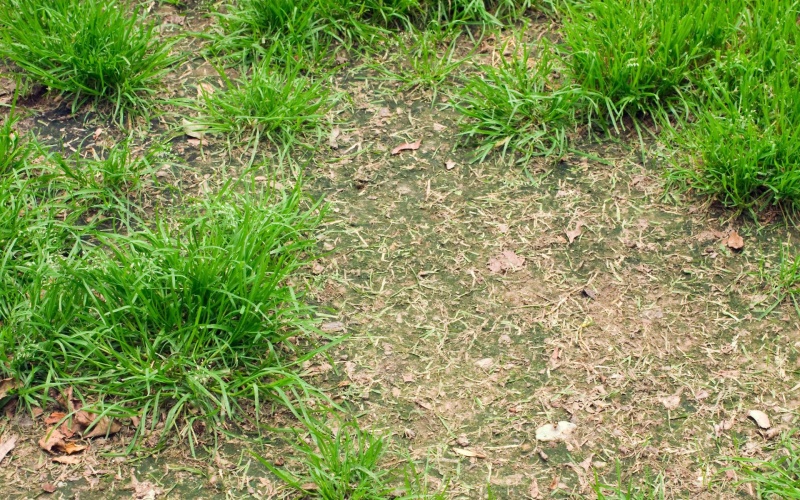Maintaining a lush and vibrant lawn requires dedicated care, but when lawn diseases strike, it can feel like an uphill battle. Understanding the signs, causes, and effective treatment methods for lawn diseases is crucial for ensuring your green oasis remains healthy. In this comprehensive guide, we will delve into the world of lawn disease treatment, offering insights and actionable tips to help you reclaim the vitality of your turf.
Recognizing the Signs of Lawn Diseases
Brown Patches and Rings
- Lawns affected by fungal diseases often exhibit brown patches or rings. Keep an eye out for irregularly shaped areas where the grass appears lifeless and discolored.
Unusual Spots and Lesions
- Fungal or bacterial infections may cause spots or lesions on individual grass blades. These spots can vary in color, from yellow and red to brown or black, depending on the specific disease.
Powdery Mildew Coating
- Powdery mildew is a common fungal disease that presents as a white, powdery coating on the grass blades. This can hinder photosynthesis and weaken the overall health of your lawn.
Thinning or Wilting Grass
- Diseases often lead to the thinning or wilting of grass in affected areas. If you notice sections of your lawn losing density or vitality, it may be a sign of an underlying disease.
Understanding the Causes of Lawn Diseases
Fungal Pathogens
- Fungi thrive in warm and humid conditions, making lawns susceptible to diseases like brown patch, dollar spot, and rust. Overcrowded grass and poor air circulation contribute to fungal issues.
Bacterial Infections
- Bacterial diseases, such as bacterial blight or bacterial wilt, can enter the grass through wounds or cuts. Overwatering and high humidity levels create favorable conditions for bacterial infections.
Poor Lawn Care Practices
- Inadequate lawn care practices, such as improper mowing, over-fertilization, or neglecting to address thatch buildup, can weaken grass and make it more prone to diseases.
Environmental Stress
- Environmental stress factors, including extreme temperatures, drought, or soil compaction, can compromise the health of your lawn, making it susceptible to diseases.
Effective Lawn Disease Treatment Strategies
Proper Identification
- Before implementing any treatment, accurately identify the specific lawn disease affecting your turf. Different diseases may require different approaches for effective treatment.
Fungicide Applications
- For fungal diseases, fungicides can be an effective treatment. Choose a fungicide labeled for the specific disease and follow application instructions carefully.
Aerating and Dethatching
- Improve air circulation and reduce thatch buildup by aerating your lawn. This helps create an environment that is less conducive to fungal diseases.
Adjusting Watering Practices
- Avoid overwatering, especially during periods of high humidity. Water your lawn early in the day to allow for proper drying and discourage fungal growth.
Reseeding and Fertilization
- Reseed damaged areas with disease-resistant grass varieties. Additionally, proper fertilization ensures your lawn receives the nutrients it needs to recover and resist diseases.
Disease-Resistant Grass Varieties
- Consider replacing susceptible grass varieties with disease-resistant alternatives when reseeding or establishing a new lawn.
Cultural Practices
- Adopt healthy cultural practices, including regular mowing at the correct height, to promote a strong and resilient lawn that is less susceptible to diseases.
Prevention for Long-Term Lawn Health
Regular Lawn Inspections
- Conduct regular inspections of your lawn to catch early signs of diseases. Prompt action can prevent the spread of infections.
Adequate Air Circulation
- Trim overhanging branches and ensure proper spacing between plants to enhance air circulation and reduce humidity, minimizing the risk of fungal diseases.
Well-Draining Soil
- Improve soil drainage to prevent waterlogged conditions, which can contribute to the development of various lawn diseases.
Integrated Pest Management (IPM)
- Implement IPM practices to control pests that can damage grass and create entry points for diseases. Biological controls and beneficial insects can be part of your IPM strategy.
Conclusion
Maintaining a disease-free lawn requires a combination of vigilance, proper care practices, and targeted treatments. By recognizing the signs, understanding the causes, and implementing effective treatment strategies, you can restore the health of your lawn and enjoy a lush, green landscape. Remember, prevention plays a key role in long-term lawn health, so adopt proactive measures to keep your turf resilient and vibrant throughout the seasons.

